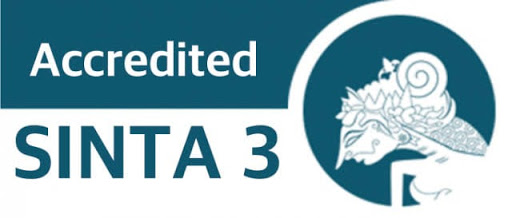Environmental Literacy Level Students of the Faculty of Teaching and Educational Sciences Riau University
Abstract
Environmental problems are the responsibility of all of us. It is appropriate for a prospective teacher to have a high level of environmental literacy, especially if he has taken the mandatory courses in Environmental Science and Disaster Mitigation. Apart from that, students from the Faculty of Teacher Training and Education are expected to be able to increase their students' environmental literacy. This research aims to describe the level of environmental literacy of FKIP Riau University students. The population in this study was FKIP UNRI students, totaling 5,013 people, while the population was 20 people from 16 undergraduate study programs with a total of 320 people. The data collection techniques used were interviews, questionnaires, observation and documentation. Data were analyzed using frequency distribution techniques. The research results show that the level of environmental literacy seen from 4 indicators (knowledge, cognitive skills, attitudes and behavior) is in the "Medium" category. With the following details, the category of level of knowledge towards the environment is in the "medium" category with an average score of 78.5, cognitive skills in the "medium" category with an average score of 72.6, student attitudes towards the environment are 65% with the medium and behavioral categories. Responsible for the environment is 65% in the medium category.
Keywords
Full Text:
PDF (ENGLISH)References
Ardianti, S.D., Wulandari, A, & Rahardjo, S. 2017. Increasing Student Environmental Care and Responsibility Behavior Through the EJAS Model with a Science Education Approach. Scientific Journal of Basic Education, 4(1).
Arikunto, Suharsimi, 2019. Research Procedures. Rineka Cipta. Jakarta.
Eagles, P,F,J & Demare, R. 1999. Factors Influencing Childrens Environmental Attitude The Journal of Environmental Education, 30 (4):33-37
Haske, A.S., & Wulan, A.R. 2015. Development of MOODLE-based E-Learning in Ecosystem Learning to Increase Students' Environmental Literacy in Enrichment Programs. Journal of Biology, Science, Environment and Learning, 8(9):402-409
Juseva M (2021). The Relationship between Environmental Literacy and Mathematical Literacy on Students' Computer Self-Efficacy Ability
Karim, A. (2018). Developing Awareness of Preserving the Environment Based on Humanism in Religious Education. Edukasi: Journal of Islamic Education Research, 12(2), 309. https:doi.org/10.21043/edukasia.v12i2.2780
Ministry of Education and Culture (2012). 2013 Curriculum Document.
Kirwan, W. E. (2010). The 21st century: The century of the American research university. Innovative Higher Education, 35, 101–111. doi: 10.1007/s10755-009- 9132-1
Kusumaningrum, D. (2018) Lietrasi Lingkungan dalam kurikulum 2013 dan Pembelajaran IPA di SD. Indonesian Jurnal Of Natiral Science Educatioan (IJNSE) Volume 01, Nomor 02, 2018, pp: 57~64
Kusumaningrum, D. (2018) Environmental Literacy in the 2013 curriculum and Science Learning in Elementary Schools. Indonesian Journal of National Science Education (IJNSE) Volume 01, Number 02, 2018, pp: 57~64
Lee, K. (2010). The Green purchase behavior of Hong Kong young comsumers: The role of peer influence, local environmental involvement and concrete environmental knowledge, Journal of Internaatioinal comsumer marketing, 23(1), 21-44. Doi:https://doi.org/10.1080/08961530.2011.524575
McBeth William dan Volk, Trudi, ―The National Environmental Literacy Project: A Baseline Study of Middle Grade Students in the United States,‖ Journal Of Environmental Education Vol. 41 No. 01 (2010)
Mullenbach, L. E & Green, G. T. (2018). Can environmental education increase student-athletes’ environmental behaviors? Environmental Education Research, 24(3), 427-444. doi:https://doi.org/10.1080/13504622.2016.1241218
North American Association for Environmental Education. (2000). Developing a framework for assessing environmental literacy: Executive summary. Washington, DC: NAAEE.
Nunez, M.B., & Clores, M.A. 2017. Environmental Literacy of K-10 Student Completers. International Journal of Envirnmental & Science Education, 12(5):1195-1215
Nuzulia, S. Sukamto, S & Purnomo, A (2020). Implementation of the Adiwiyata Mandiri Program in Instilling Environmental Care Characters in Students. Socio-DIDACTICS: Social Science Education Journal, 6(2), 237. https://doi.org/10.3667/jppi.v7i2.366
Organization for Economic Co-operation and Development. (2007). PISA 2006: Science competencies for tomorrow’s world, volume I analysis. Paris: Author. world, volume I analysis. Paris: Author.
Roland W. Scholz and Claudia R. Binder, Environmental Literacy in Science and Society: From Knowledge to Decisions (Cambridge ; New York: Cambridge University Press, 2011)
Simarmata, B., Daulae, A.H 7 Raihana, R (2019). The Relationship between the Level of Environmental Knowledge and Students' Environmental Concern Attitudes. Jurnal Pelita Pendidikan, 6(4).doi,ps://doi.org/10.24114/jpp.v6i4.10584
Sugiyono, 2018/ Mixed Research Methods, Bandung: CV Alfabeta
DOI: http://dx.doi.org/10.33578/pjr.v8i5.9665
Refbacks
- There are currently no refbacks.
Copyright (c) 2024 JURNAL PAJAR (Pendidikan dan Pengajaran)

This work is licensed under a Creative Commons Attribution-NonCommercial-ShareAlike 4.0 International License.
JURNAL PAJAR (Pendidikan dan Pengajaran)
Secretariat
Program Studi Pendidikan Guru Sekolah Dasar
Gedung B1, FKIP Universitas Riau
Kampus Bina Widya Km. 12,5 Simpang Baru Panam
Pekanbaru Riau Indonesia 28293
e-mail : pajar@ejournal.unri.ac.id



